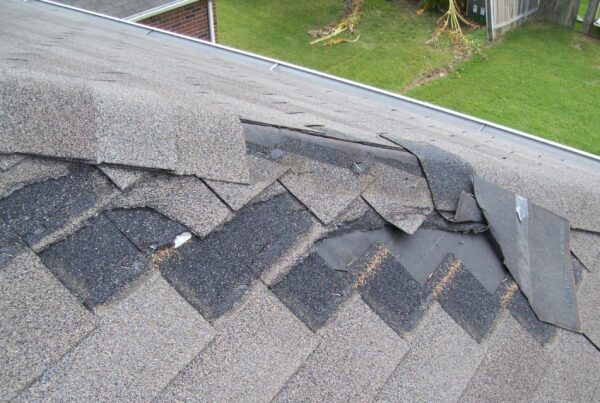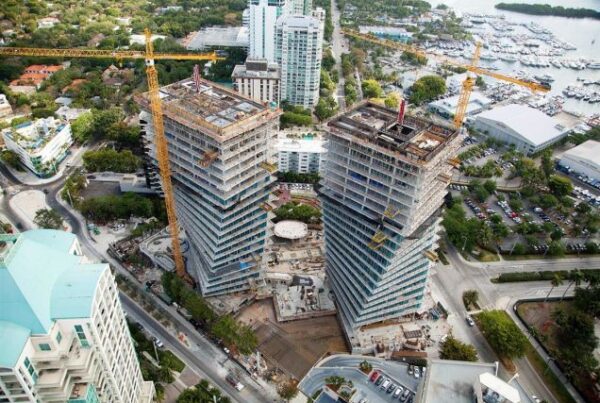The New York Times published a fascinating article in June that discussed the use of wood in relatively high rise building construction. While the likelihood of seeing such use in the United States remains to occur, it does show how new thinking is permeating the building construction industry and how we, as building inspection engineers, must remain alert to technological changes taking place.
The Times article was written by Henry Fountain and published on June 4.
In the article, the writer describes a nine story apartment building in London that from the second story up uses wood as the construction material. It is said to be among the tallest wooden residential structures in the world and was constructed three years ago.
The building makes use of cross laminated timbers (CLT generically) and panels, manufactured from spruce and in sizes up to one foot thick and 30 feet long. As building inspection engineers we are all familiar with laminated lumber (engineered lumber) products in the form of plywood and laminated beams. The building’s structural system, its floors and roof, interior and exterior walls, stairwells, and elevator shaft are reportedly constructed from these CLT products.
While not widely seen in the United States, its European popularity apparently is well established and growing. One big draw to this product is its environmental friendliness. Clearly, a renewable and more sustainable product such as wood will have a distinct following from “green construction” proponents. Currently about 80% of CLT products originate from Austrian grown spruce because spruce forests there have been carefully managed for several hundred years. However, it is interesting to note that CLT products consume huge volumes of wood, with a typical eight foot high wall said to contain six times as much wood as one framed with 2 x 4 construction.
A firm in Whitefish, Montana (Innovative Timber Systems) owned by Pete McCrone is promoting such construction and producing CLT here in America. Innovative Timber Systems has constructed one building using the product so far, but using CLT from Austria.
Various arguments have been made in support of the use of such materials. One of them includes the idea of a low carbon footprint related to the fact that by photosynthesis forests consume large volumes of CO2, locking it into the wood. It is claimed that using such wood products offsets other carbon releasing activities.
A more interesting argument stems from finding a possible use for beetle damage timber growing in the Western United States. These pine trees have lost their usefulness for conventional sawn lumber and pose a significant forest fire risk. Incorporating them into engineered lumber products on a wide scale basis makes use of the damaged resource while averting fire risk.
The New York Times article quotes the technical services director (Borjen Yeh) of the American Plywood Association as saying, “Not many engineers in this country understand how to design or construct using CLT.” While I cannot speak for every engineer, certainly any training I received in structural wood design was accomplished more by experience and continuing education than by formal classroom training. So Mr. Yeh may have a point.
Another similar issue also includes acceptance of such products by architects and code-enforcement officials. While such materials may actually have better aesthetic qualities in some applications, understanding limitations involved with their use – including fire resistance – has to take place before widespread acceptance will occur. I recall writing about the growing use of engineered lumber products such as beams and floor joists during the 1980s and finding many code officials asking questions about fire resistance.
While multistory construction is taking place in England, Melbourne, Australia is set to welcome a 10 story high CLT apartment building as you read this. Thinking is beginning to occur that construction as high as 30 stories may be possible using CLT. Such ideas take root because CLT is not entirely viewed as typical wood or timber frame construction. In some ways, design and construction has been paralleled to precast concrete. One significant benefit touted is that building with such material results in construction that takes only about 67% of the time for a similarly sized building constructed in steel or concrete. Much of that saving comes from prefabrication of exact sized components that are essentially assembled as a kit in the field.
Another benefit flagged is that load paths through the building become redundant through the use of panelized construction. While that may in fact be a benefit (and many of us know that wood framed construction can distribute loads in unusual and redundant ways as components in the structure age or are damaged), analyzing and using that fact will be complicated in the design process.
Obviously one of the biggest hurdles to overcome regards fire resistance. In the U.S. wood construction is often height limited specifically due to fire concerns. In conventional sawn lumber construction, charring may damage structural integrity but it takes some time to burn to a depth where failure is imminent. Depending on how CLT products are designed, utilized, and protected against fire, the concerns for performance in fire situations may have merit.
A final, but also significant issue, concerns sound transmission. Learning to design for acoustic considerations with a product that is dense and may transmit sound quite effectively will require specialized considerations.
Many of the concerns of designing and building with CLT products are being explored and resolved abroad. How soon American design and construction practices will evolve to using such materials frequently remains to be seen. None the less, maintaining an awareness of them and being alert to some of their use issues is a part of our knowledge inventory as building inspection engineers.
NABIE acknowledges information provided by the New York Times article in the preparation of this article.


